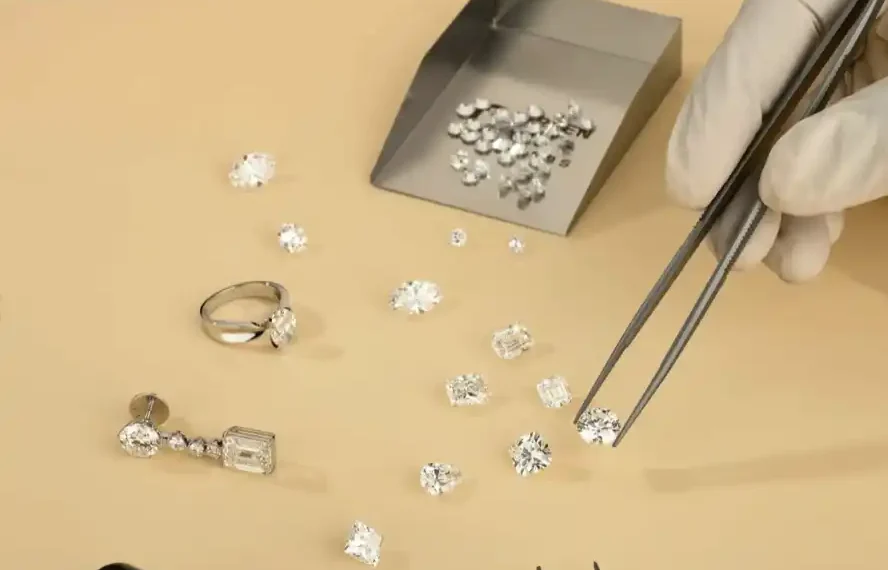
Introduction to Lab-Grown Diamonds
In recent years, there’s been a significant buzz around lab-grown diamonds. But what exactly are they? How do they differ from their natural counterparts?
What are lab-grown diamonds?
Lab-grown diamonds, also known as synthetic or cultured diamonds, are created in controlled environments that mimic the natural processes that form diamonds deep within the Earth’s mantle.
How are lab-grown diamonds created?
These diamonds are formed through two main processes: High Pressure High Temperature (HPHT) and Chemical Vapor Deposition (CVD). HPHT simulates the conditions found deep within the Earth, while CVD involves the deposition of carbon atoms onto a substrate to form diamond crystals.
Benefits of Lab-Grown Diamonds
Ethical considerations
One of the primary benefits of joyeria con diamantes de laboratorio is their ethical sourcing. Unlike natural diamonds, which often come with a legacy of conflict and exploitation, lab-grown diamonds are free from these ethical concerns.
Environmental impact
Another advantage of joyeria con diamantes de laboratorio is their minimal environmental footprint. Traditional diamond mining involves extensive land disruption and can lead to habitat destruction and pollution. In contrast, lab-grown diamonds require significantly fewer resources and have a lower carbon footprint.
Affordability
Lab-grown diamonds are also more affordable than their natural counterparts. Since they can be produced in a controlled environment, the supply chain is more efficient, resulting in lower prices for consumers.
Quality and Durability
Comparison with natural diamonds
Lab-grown diamonds exhibit the same physical and chemical properties as natural diamonds. They are composed of pure carbon and possess the same brilliance, hardness, and fire.
Certification standards
To ensure transparency and quality, lab-grown diamonds are certified by reputable gemological laboratories. These certifications provide consumers with assurance regarding the authenticity and quality of the diamonds.
Design and Customization
Versatility in design
One of the most exciting aspects of lab made diamonds is their versatility in design. Whether you prefer classic solitaire settings or modern halo designs, lab made diamonds offer endless possibilities for creating the perfect piece of jewelry.
Customization options
In addition to standard designs, many jewelers offer customization options for lab-grown diamond jewelry. From selecting the perfect diamond shape and size to choosing the metal and setting style, you can create a truly unique piece that reflects your personal style.
Buying Guide
Factors to consider
When purchasing lab-grown diamonds, there are several factors to consider, including the 4Cs (cut, color, clarity, and carat weight), certification, and budget. It’s essential to do your research and work with a reputable jeweler who can guide you through the buying process.
Where to buy lab-grown diamonds
Lab-grown diamonds are available from a variety of sources, including online retailers, brick-and-mortar jewelers, and direct-to-consumer brands. Be sure to choose a retailer with a good reputation and positive customer reviews.
Caring for Lab-Grown Diamonds
Cleaning and maintenance
To keep your lab-grown diamonds looking their best, regular cleaning is essential. You can clean them at home using mild soap and warm water or take them to a professional jeweler for professional cleaning.
Longevity and durability
Lab-grown diamonds are highly durable and can last a lifetime with proper care. They are resistant to scratches, chips, and other forms of damage, making them an excellent choice for everyday wear.
Myths and Misconceptions
Addressing common myths
Despite their growing popularity, lab-grown diamonds are still surrounded by myths and misconceptions. One common myth is that lab-grown diamonds are not real diamonds, which couldn’t be further from the truth.
Dispelling misconceptions
In reality, lab-grown diamonds possess all the same physical and chemical properties as natural diamonds. They are chemically identical and indistinguishable from natural diamonds without specialized equipment.
Celebrities and Lab-Grown Diamonds
Celebrity endorsements
Many celebrities have embraced lab-grown diamonds for their ethical and environmental benefits. From engagement rings to red carpet jewelry, lab-grown diamonds are making a splash in the world of fashion and entertainment.
Red carpet appearances
Several A-list celebrities have been spotted wearing lab-grown diamonds at major events, further elevating their status and desirability. These high-profile endorsements have helped to increase awareness and acceptance of lab-grown diamonds among consumers.
Future of Lab-Grown Diamonds
Trends and predictions
As technology continues to advance, the popularity of lab-grown diamonds is expected to soar. Consumers are increasingly conscious of the ethical and environmental impact of their purchasing decisions, driving demand for sustainable alternatives like lab-grown diamonds.
Technological advancements
Advancements in diamond-growing technology are also likely to drive down production costs and improve the quality of lab-grown diamonds. This could make them even more accessible to consumers in the future.
Conclusion
In conclusion, lab-grown diamonds offer a sustainable, ethical, and affordable alternative to natural diamonds. With their identical beauty and durability, lab-grown diamonds are revolutionizing the jewelry industry and changing the way we think about luxury. Whether you’re shopping for an engagement ring, a pair of earrings, or a statement necklace, lab-grown diamonds provide a responsible choice without compromising on style or quality.


